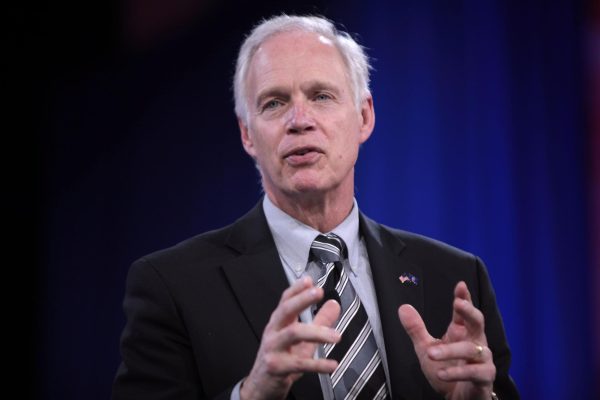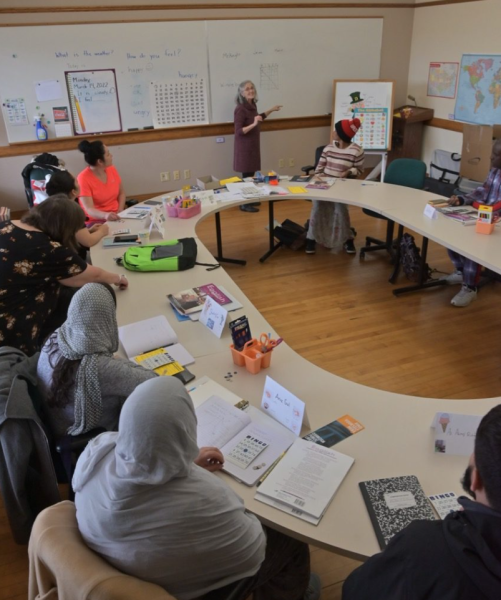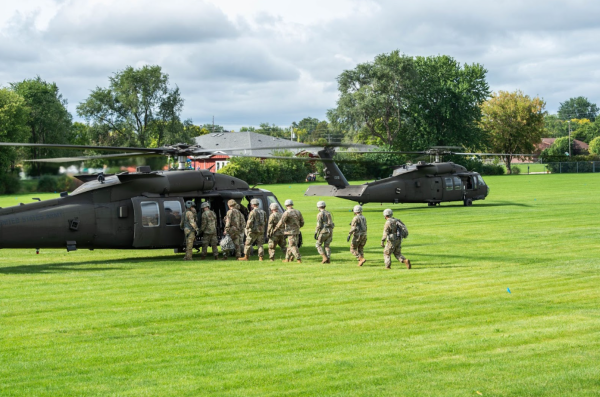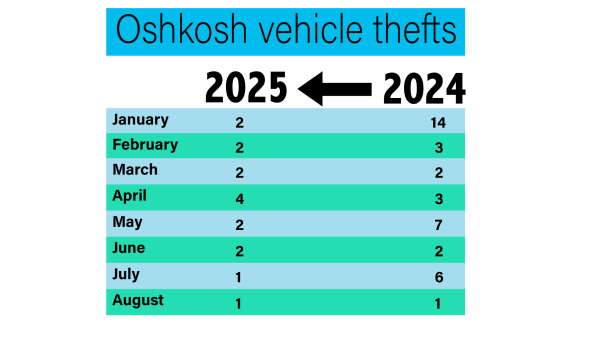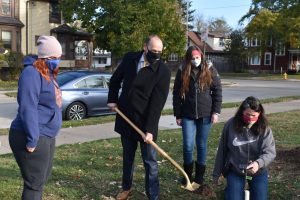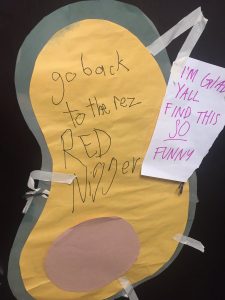UWO, UWFV participate at Research in the Rotunda
Oshkosh and Fox Valley students at the state capitol.
On April 17, six UW Oshkosh students and two students from the UW-Fox Valley campus traveled to the Wisconsin State Capitol to share their undergraduate research at Research in the Rotunda.
Student researchers and their faculty mentors from all schools in the University of Wisconsin System presented their work in the Capitol Rotunda to state legislators, school administrators, alumni and members of the public.
The event featured 96 poster presentations from UW System students. Many UWO students shared their research with UW System president Ray Cross.
Chancellor Andrew Leavitt attended the event and talked about the value of research.
“Students can take the next step in their intellectual progression of when they learn stuff in the classroom, to be able to directly apply it or in some instances discover new truth and new knowledge,” Leavitt said. “And then the key to [research] is that they must be able to publicly defend it, and that to me is the definition of research.”
Students shared their work with an audience of legislators from both state and local levels.
“Research in the Rotunda is an amazing opportunity for our students to showcase their terrific research and their intellectual pursuits,” Leavitt said.

Michael Clark and his adviser, Dr. Eric Hiatt, pose with their research.
Junior geology student Michael Clark presented his research on the Neda ironstone formation. His research was focused on investigating what the minerals and microscopic textures present in the Neda could tell us about its origin.
“A group of us went into Senator Dan Feyen’s office and spoke about our research with him,” Clark said. “It’s a really neat opportunity to be able to share with him what I’ve been working on, as well as the other elected officials who stopped by my poster throughout the afternoon.”
Leavitt commented on the importance of legislators learning about undergraduate research.
“Legislators need to know and understand what we do,” Leavitt said. “I think that displays of this kind — of undergraduate research — are a fantastic example showing the value that the UW provides our students and the things that they can do.”
Senior biology students Hayley Vandenboom and Angela Vickman had a research project titled “Epigenetics and Evolution of Phenotypic Plasticity in Arabidopsis Thaliana.”
“The basis of why we did this project was global warming,” Vandenboom said. “We wanted to look at how climate change and how the changing of seasonal cues was going to affect organisms in our world.”
Vickman and Vandenboom have spent over a year on their research, looking into how climate cues impact the plant called arabidopsis thaliana. The duo presented their findings at the National Conference on Undergraduate Research in Georgia on April 10 through 13.
“It is really cool to be here in the Rotunda, specifically with all the legislators and all of these important people that have come and are interested in what we’re doing,” Vickman said. “I feel like a lot of undergraduate research is sometimes overlooked, so it’s a good feeling to have people who are interested in what we’re doing at the undergraduate level.”
Anthropology student Melanie Gruenstern looked at the effects of variation and climate on decomposition. She tested a theory on a post-mortem interval calculation using pigs, and over the course of two years found that the calculation is inaccurate in varying climates.
Brianna Beseler, a junior studying biology, mapped the long-term history of fires in northeastern Wisconsin by collecting a lake sediment core from the bottom of Bass Lake.
“There is no research out there of Wisconsin’s fire history,” Beseler said. “Nobody knows before humans showed up and before we colonized here.”
Beseler used metal rods to collect sediment from the bottom of the lake and sent the samples to be radiocarbon dated, finding data from 12,000 years ago. After looking at the charcoal in her samples, she found significant fires throughout history.
“We also did the running mean, so you can see we’re on an uphill trend right now,” Beseler said. “We’re due for more fires.”
Senior marketing student Kristen Mahan received a student/faculty collaborative research grant from the Office of Student Research and Creative Activity with English professor Maria Novotny to conduct a study on infertile men and their access to support groups on social media.
“Our research project was directed toward the male experience with infertility because it’s such a stigmatized women’s issue, when in reality one in three times that a couple can’t have a child, it’s from the male,” Mahan said. “On social media there are all these support groups for women and infertility accounts created by women, for women.”
Mahan and Novotny ran a social media account called “Sperm Stories” for three weeks and surveyed men who followed their page for feedback. They found that men want a support system but don’t like to engage because they would rather remain anonymous.
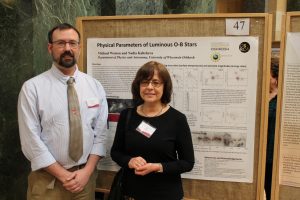
Michael Watson and Nadia Kaltcheva pose with their research.
Senior astronomy student Michael Watson studied supergiant stars and their physical parameters, including temperature, brightness and colors. He also presented his research at NCUR.
“Black holes are my favorite thing,” Watson said. “That’s why I like studying supergiant stars because these are the stars that will turn into neutron stars and black holes and such.”
UW-Fond du Lac student Eric McDaniel presented about a drone and software that he and David Juckem created to measure methane and other characteristics of the environment. The drone can fly up to 400 feet and analyze an environment while livestreaming the data to a laptop.
“I want to compliment the faculty who work with these students,” Leavitt said. “I think they do an extraordinary job of mentoring and teaching students these kinds of techniques, and this is the best example of what can happen at a place like UW Oshkosh.”




